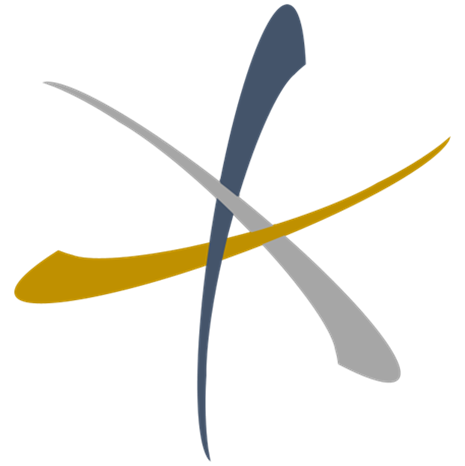Dying the Green Squirrel Purple
The art of "hiring down" to get people who can execute your strategy
Originally published Mar 20, 2016 - it's a company favorite!
I have a close friend who, although highly qualified and universally liked during the interview process, didn’t get the job she wanted because the employer was looking for a “purple squirrel.” While it may seem odd to be seeking out a festively colored rodent to do important work, there’s actually a real, Wikipedia-certified definition for this. The purple squirrel is the person with exactly the right experience, the ideal knowledge, skills, and abilities to fit an open ready to do everything perfectly from the get-go, with no ramp-up, no guidance, and no training. A unique and special version of a common yard mammal, if you will.
This company had the money and reputation to attract a large candidate pool, and to hunt until that one specific squirrel was caught (and not run over). Most of us don’t have the luxury of playing hide-and-seek with animals of a particular hue, however. When we hire for skilled positions, the “ideals” are often needles in a gigantic haystack that cost a fortune to find, and “buying” them—that is, if we’re not outbid by those with more resources—can break the bank. That doesn’t leave much room for hiring, training, or rewarding others. And, since the purple squirrel gets all of the nuts, the rest of the nest may just get a little bitter.
Sure, it sometimes makes sense to open the wallet, but it’s not always feasible nor even the best approach. If we find we must forego the violet vermin, what can we do? We can (a) Reallocate some things to other jobs so we need more lavender, say, than purple, (b) Outsource some functions so that what’s left requires the more readily available groundhog of standard color, or (c) Hire a green squirrel and develop her over time, sort of "dying her purple" if you like. All of these alternatives have situational positives and negatives. And many organizations will simply default to attempting to hire “smart people” who will “pick it up.”
Let's look in a little more depth here at Option "C,“ or "hiring down.” It can be very effective. It expands the candidate pool, yields cheaper resources, and allows us to “grow” individuals in alignment with our culture and way of doing business. These are good things, but there are also risks. What if an individual never develops into what we need? What if our business needs can’t wait for our forest ferret to become full-blown rodent royalty? Our strategies depend on our people. Even with the best intentions, we can seriously limit short-term capacity and diminish long-term returns if we settle on someone “less.”
The key to coloring the green (or really, any shade of) squirrel purple is that we can’t just "settle" and hope for the best. We can’t just start the hiring process hoping to get the perfect person on the cheap and taking the “best of the rest” when it’s clear that’s not possible. Hiring down needs to be a conscious decision. There needs to be a clear purpose, the conditions have to be right, and there has to be a feasible plan. Otherwise, we’re effectively betting our futures on finding a "diamond in the rough" without knowing what to look for, and without the ability to polish it up. Therefore, it’s critical to think through the:
- Essentials—Minimum qualifications you will accept. For many jobs, an individual will at least need to have a foundation in the relevant field, or at least have intangible skills that indicate the ability to succeed. You need to know what those are, and not accept less when hiring.
- Method—Specific ways the selected individual will obtain the necessary knowledge. This may be rigorous on-boarding, formal training, one-on-one experiential learning, etc. It is important to have a clear, effective plan, and to know how long it will take for the individual to complete it.
- Urgency—Time at which you need someone to deliver the full slate of outcomes expected from the role. The calculus is different if your organization demands results immediately than it is if the need is evolutionary. You need to have a sense of timing, even to the point of setting performance milestones.
- Colleagues—Other employees who already possess the required skills. There is a difference if the role is a contributor augmenting a team, as opposed to leading it or being asked to serve as the subject matter expert. Context is key factor in evaluating the feasibility of a developmental strategy.
- Resources—Cost to provide the developmental support vs. cost to hire. Developmental employees’ salaries are lower than those who come in fully qualified, but the necessary training may end up making them more expensive. The dollars clearly matter. You need to do the math.
- Infrastructure— Extent to which the requisite programs and management mechanisms are in place. You need substance, and you need to be able to measure results. "Winging it" can be costly and sends the wrong message to new employees. It also increases the risk the person doesn't pan out.
- Culture—"Soft" factors that affect employee and workplace dynamics. Developmental staff are more likely to grow in the organization’s image, while experienced hires bring their own approaches and may want to “shake things up.” You need to know your organization’s culture, and how you want to shape it.
- Risk—Impacts if the person doesn’t develop as anticipated. There are risks inherent in under-hiring—you’re getting a person that, at present, can’t do the whole job at the level expected. It’s critical to know the potential business impacts, the costs of mitigation, and your tolerance for possible failure.
- Commitment—Degree to which management is willing to "follow through." Hiring down requires a steadfast effort to provide the necessary training and ensure that content is absorbed. Development needs to be a priority, and you need to assure it doesn’t get overcome by events.
It’s not just one factor that always tips the scales, but hiring can’t just be about saying "I have to settle for who I can find, and they’ll have to learn." If you don’t think it through and you don’t have a plan you may be better off not hiring at all. Picking someone whose primary skill is "seeming competent" is like trying to stuff a square squirrel in a round den. Unless you're lucky, it won’t help you execute your strategy and get the results you need. It’s also not fair to the person you’re hiring or the other people in your organization that will work with him. So "go green," but make sure you've got the right color paint on hand.
Color Your Squirrel
Contact us, get started picking your palette, and hire the best fit for your situation.
Read Other Posts





















